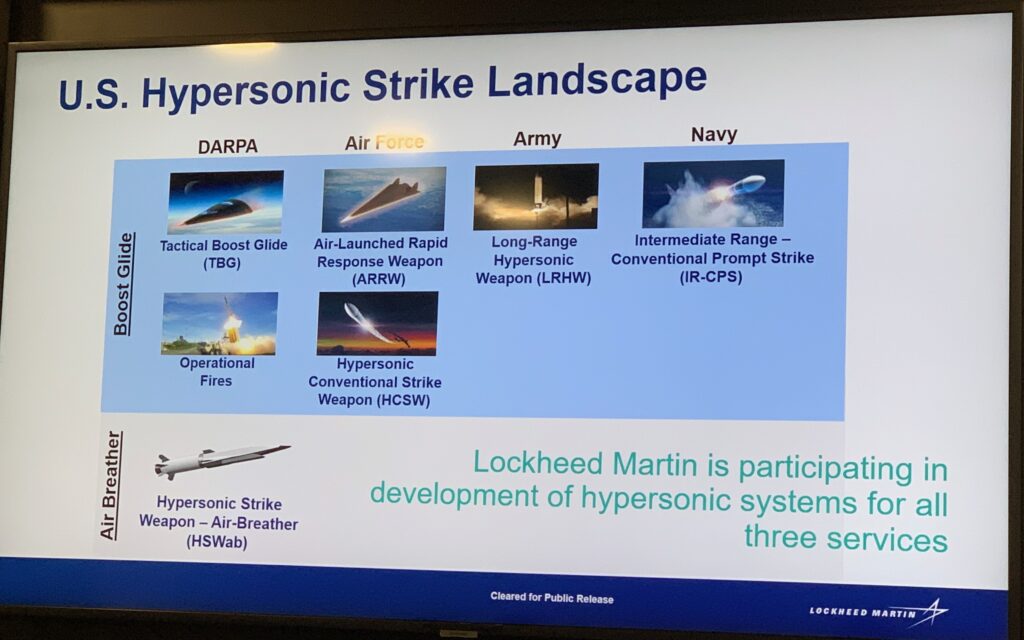Hypersonics: Lockheed Says Supply Chain Is ‘The Test’
Posted on

AUSA: The idea of a weapon that flies faster than five times the speed of sound is still something of a wonder. But one of the top industrial experts in hypersonics, Lockheed’s Eric Scherff, says the biggest test to producing and deploying offensive hypersonic weapons will not be the technology for ultra-high-speed itself, which has been demonstrated and proven, but the supply chain required to build those weapons in quantity.
Industrial base issues have afflicted some of the biggest and most important Pentagon programs, including the F-35 Joint Strike Fighter (JSF) and the Joint Air-to-Surface Standoff Missile (JASSM), as Breaking D readers know.
Lockheed, which makes both JSF and JASSM, is painfully aware of this point. So it makes sense that hypersonics was a key topic of conversation at its global supply chain meeting on Oct 1, with more than 300 suppliers attending from around the world, as Rita Flaherty, VP for strategy and business development, told reporters here this morning.
Sherff and Flaherty didn’t identify any specific current weaknesses — such as there being only one or two companies able to manufacture a key component — but they made clear Lockheed is doing all it can to ensure a steady flow of materiel and engineers to their hypersonics efforts. Lockheed is working on all three major hypersonics programs: the Army, Navy and Air Force variants, which use various launchers to boost an unpowered “glide vehicle” that then skips in and out of the upper atmosphere. (The Common Glide Body was originally designed by Sandia Labs and now being built by Dynetics).
Lockheed is also involved in the HAWC program (Hypersonic Air-breathing Weapon Concept), which is Raytheon and Northrop’s combined effort to build a hypersonic weapon that travels through the air like a cruise missile, under continuous power, rather than relying on a rocket booster to launch a glide vehicle. As Breaking D readers know, Northrop claims to have built a scramjet engine that can be 3D printed and uses ordinary military fuel. The two companies said at the Paris Air Show that their weapon would fly “soon.”
Meanwhile, Scherff made it crystal clear that the House Appropriations Committee’s decision to substantially trim the administration’s hypersonics’ budget request “would be pretty devastating to our schedule.” The Pentagon said Sept. 20 that a Continuing Resolution would also hurt the chances of the Army fielding its Long Range Hypersonics Weapon program by 2023 unless Congress passes a regular defense spending bill. A Continuing Resolution would delay “critical long lead purchases, putting planned delivery at risk, adversely impacting the ability to deter and defeat near-peer adversaries.”
For the Army, hypersonics is part of its broader Long-Range Strategic Fires, the service’s top priority, which covers everything from hypersonic missiles to longer cannon barrels for the venerable 155mm howitzer.
Subscribe to our newsletter
Promotions, new products and sales. Directly to your inbox.
